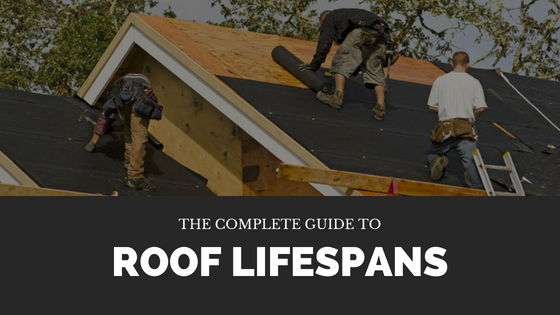The Complete Guide to Roof Lifespans

The roof protects your home from any harsh weather elements. When purchasing your house, the first thing you should consider is the roof. If you skip this part and purchase a house with a low quality roof, you will bear the heavy costs of repairing or replacing it. You need to make sure that the roof is in good condition to last for a long period. The average lifespan of a roof is twenty to twenty-five years. However, this depends on a number of factors, namely:
- Geographical location, such as proximity to a salt water source
- Climate such as hail, snow, ice, harmful sun rays
- Faulty or poor installation- This issue reduces the life expectancy of the roof system. However, to make sure that the installation of your roof is proper, you might need to seek the input of a professional. The professional will thoroughly examine your roof and tell you if its installation is poor or not.
- Wrongly installed flashing- Flashing aids in sealing the areas of the roof that have been penetrated with cooling systems, heating systems, chimneys, skylights, and even vent pipes, among others. When its attachment is poor, it could make the seams open, lap, and cause the tiles to blow-off in the end. Additionally, it reduces roof puncture release.
- Animals and insects- You might want to start implementing measures that will scare them away or evict them from the roof. These critters cause a lot of damage on roofs, which mainly leads to withering shingles and leaks.
The material of the roof is the main factor that determines its lifespan. There are six common types of roofs. They are:
- Modified Bitumen- Lasts for ten to sixteen years
- Concrete tile- Lasts for thirty to fifty years
- Metal- Lasts for thirty to forty-five years
- Architectural asphalt shingles- Lasts for twenty-four to thirty years
- 3-tab asphalt shingles- Lasts for fifteen to eighteen years
- EPDM (rubber)- Lasts for ten to sixteen years
Even though metal lasts longer in comparison to the rest of the materials, it is mostly used on house as an aesthetic. The most durable option for most homes is the concrete tile but it is very expensive. Thus, the alternative option is the use of asphalt shingles. The following three factors are overlooked when it comes to listing down the factors that affect the longevity of the roof. They include:
- Orientation- A slope that faces the direction where the sun has most access to it will have a shorter lifespan.
- Slope- This is the angle of the roof. A roof that has a high pitch will last for a longer period in comparison to that which has a lower pitch. This is because the rain and snow will not be able to rest or accumulate on the roof.
- Colour- Roofs that have darker colours tend to absorb more heat from the atmosphere. Thus, a person who lives in a warm climate area should not have a dark coloured roof. The expansion and contraction will even affect the flashing of the roof.

In Awe Roofing Limited is an Award-Winning, family owned and operated Vancouver Roofing Contractor with over 17 years of roofing experience. We serve the entire Lower Mainland area, from Whistler to Chilliwack, employing a team of professional staff members. Our team has won numerous awards including Best of Homestars for the last five years, and Three Best Rated six years in a row. Learn more






















